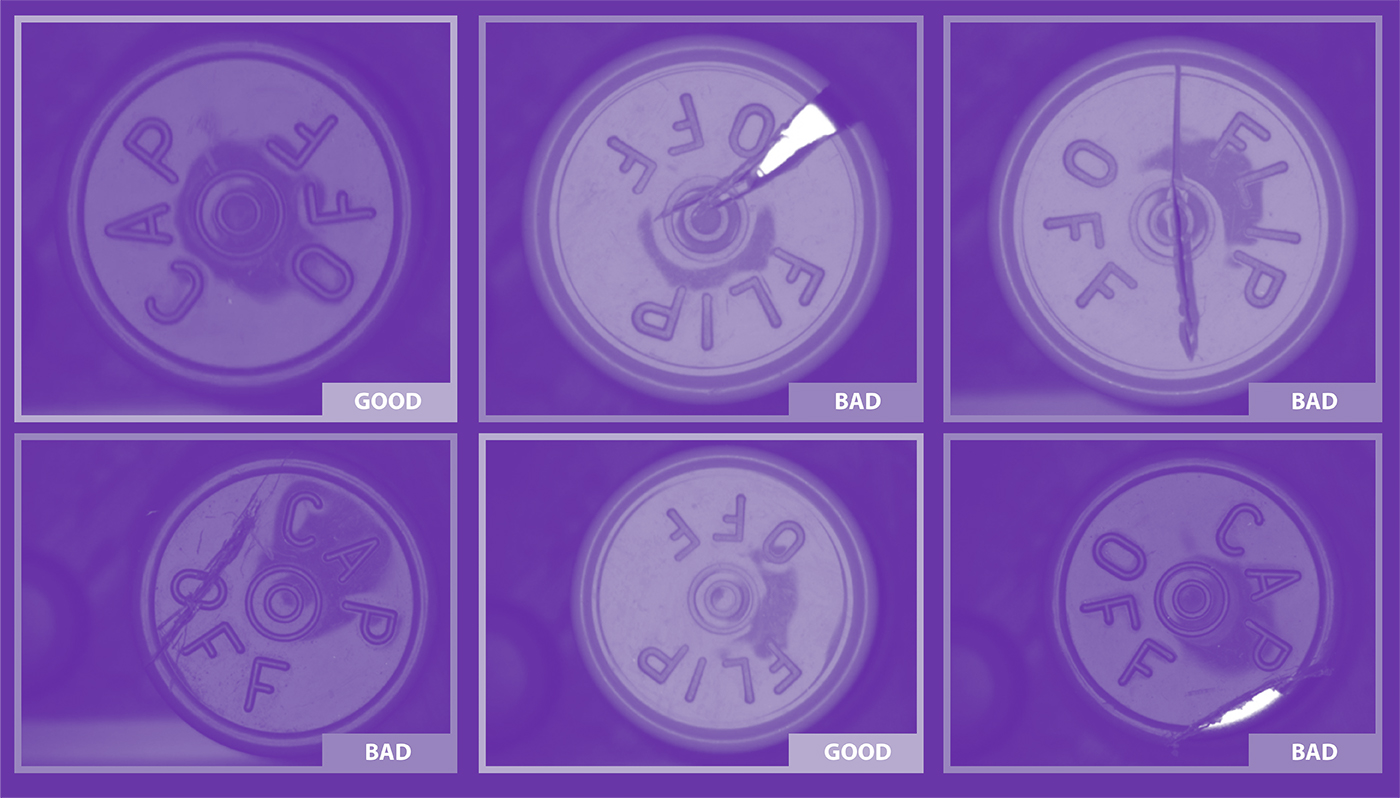Case Histories
Defects detection and classification, pharma

Tasks
Full-image multi-class classification
Image analysis
Annotation
Computer vision
Industry
Pharma
Cosmetic industry
OEM (original equipment manufacturer)
Technologies
PROBLEM
The client is a major manufacturer of inspection machines in the pharmaceutical sector, interested in upgrading its machines with an artificial intelligence system for the visual inspection of vials.
The two macro project goals were:
- to improve the performance of the current inspection system, especially in terms of false scrap reduction
- to minimize the effort involved in setting up and managing new formats (different in size and color)

STARTING POINT
The machines involved in this project are responsible for the visual inspection of the upper part of the vials with flip-off cap. The current system is rule-based, i.e. based on the definition of a set of rules that allow the detection of non-conforming parts.
This kind of system works well to detect defects, but performs badly in variable and unknown production contexts, demanding periodic fine-tuning to maintain the expected performance. In addition, these systems have to be managed by skilled operators, in particular for modifications and format changes.
SOLUTION IMPLEMENTED
The machines were equipped with the Vision Cam AI-go, co-developed with IMAGO Technologies GmbH.
Through the camera, the operator, without any previous knowledge in AI or computer vision, was able to acquire about 20 images for each class of defect (good / scrap, color non-homogeneity, cosmetic defects such as scratches and misses) used for the model specialization directly on the device in less than 1 minute.
The model was then tested and the output was punctually and easily analyzed by the operator, in order to identify the examples on which the neural network performed badly and, if necessary, to launch a new training.
Once the required performance is reached, the model is ready to be activated for production use.

RESULTS
Model training time ~ 1 minute
Model inference time ~ 100 ms
Option to scale up to more complex problems using AI-go Studio.
The creation and modification of the format is made easier (in terms of time and skills required) through the use of pre-trained models that only need to be specialized on the basis of the images collected directly in production.
Reduction of false rejects: based on examples from production, the model performs very well even in sub-optimal and variable lighting situations.
Better anomaly detectability– even in sub-optimal visual conditions.
Quality evaluation objectification. The quality evaluation is more reliable over time.
Data-driven approach. To keep track of defects in order to review the process and/or supply chain for continuous improvement.
